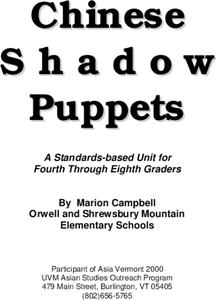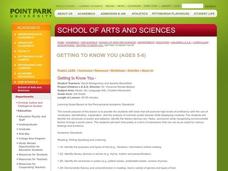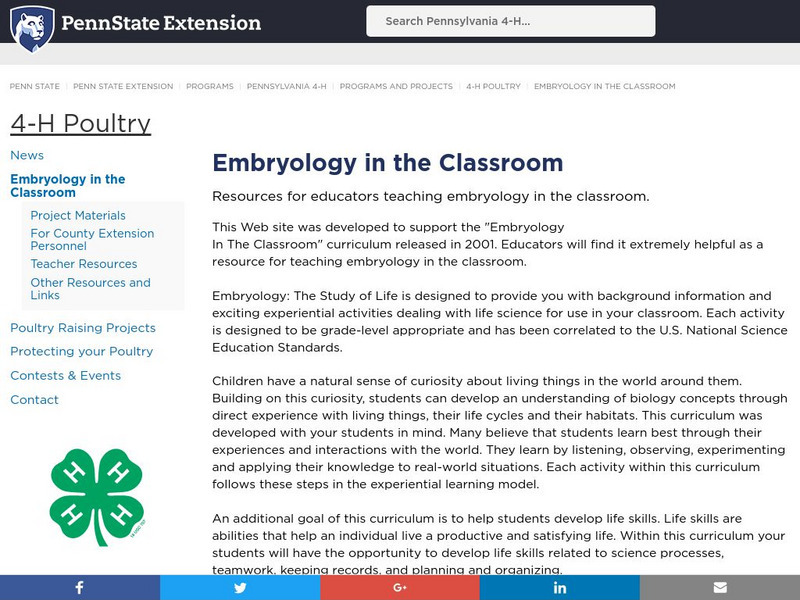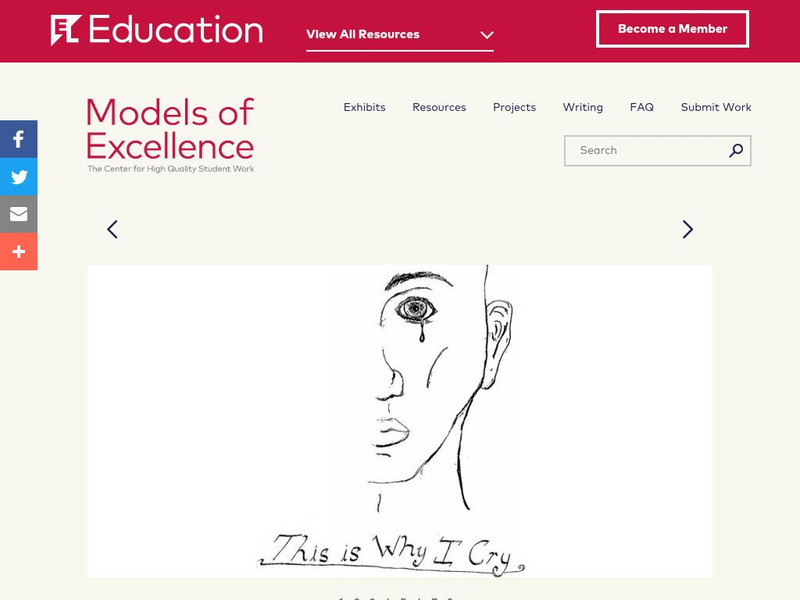Curated OER
Developing a Local Stratigraphy
Students examine rock strata for the distribution, deposition, and age of sedimentary rock. They describe rock types in a variety of outcrops and construct a regional stratigraphy.
Curated OER
Chinese Shadow Puppets
Students explore the art of Chinese shadow puppetry. They create puppets, develop and rehearse scripts and perform a show in front of the class.
Curated OER
Getting to Know You
Third graders explore different types of poetry and illustrate their own experiences through creating their own poem. In this getting to know you lesson, 3rd graders create and recite their poems with a self-portrait.
Curated OER
The U.S. Constitution: Practical Application of the Amendments
Students create their own HyperStudio cards which include scanned images of at least one member (designated reader) of each group. They add the text of a predetermined amendment. The designated reader then reads the selected amendment.
Curated OER
Xinjiang: A Bi-Cultural Perspective
Twelfth graders research the affects the Chinese Nuclear Program has had on the environment and the health of the Uighur minority.
Curated OER
A Seasite Scavenger Hunt
Seventh graders surf a website to find answers to 15 questions about Southeast Asia.
Curated OER
Huichol Yarn Painting
Sixth graders study the Huichol Indians and the art of yarn painting. They create their own yarn paintings in the Huichol style.
Curated OER
The ABC's of Walter Anderson
Fifth graders examine how motifs, symbols, and ideas influence various pieces of visual art. They compare and contrast the work of Walter Anderson to pre-historic cave paintings and create a glue line print using motifs and symbols found...
Curated OER
Investigating the Cuban Perspective
Learners examine different perspectives on the events during the Cuban Missile Crisis. Using the internet, they research the Cuban perspective on the issue and discover the need for empathy in a situation like this. They use primary...
Buck Institute
Buck Institute for Education: Pblu: Back in the Day
An example of a project-based learning assignment where students examine their own identities based on their family history and environment then move forward to write a nonfiction narrative which will be showcased.
Buck Institute
Buck Institute for Education: Pblu: The 22nd California Mission
When fourth graders are required to learn their state history, this California teacher takes it across the curriculum implementing a project-based learning unit highlighting the Spanish Mission Era of California in the 18th and 19th...
Other
Critical Thinking Works: Investigating the Inca
Students can explore Peruvian culture through project-based learning. In the role of present-day reporters, students will research the lives of the Inca in the 15th and 16th centuries. Includes suggestions for actively engaging students,...
Other
National History Day
Students and teachers participate in a yearly history-themed competition and celebration of historical topics. Young learners conduct primary and secondary research by studying archives, museums, oral history interviews, and historical...
Broward Education Foundation
Broward Education Foundation: Project Living History [Pdf]
Inquiry research is self-directed and project-based on the grade-level curriculum. Students begin an area of inquiry research becoming a critical historian. Focusing on research writing involves reading and a digital search on Destiny...
Other
Dwellings: The Message of Houses and Their Contents, 1780 1820
Architectural styles of the times reflected the economic status and taste of the individuals who owned the houses. As this turn of the century proceeded from 1780 to 1820, many changes occurred in communication, transportation,...
Glenbow Museum
Glenbow Museum: Teacher Resources: Mounties
Many students view Mounties as simply policemen on horses. But it is important to understand the Mountie not only as a Canadian symbol, but also for the role they took in shaping the development of Western Canada. This site has many...
Alabama Learning Exchange
Alex: Research Project: American Heroes
This lesson is designed to help students of all backgrounds learn to work together in groups to complete a research paper assignment. This is a collaborative based lesson plan that challenges students to work together to complete the...
EL Education
El Education: Operation Kidfit Recommendation Report
Students design a health and human body exhibit for a local museum by researching topics such as infectious diseases across history, anatomy, physiology, health, and nutrition. Students visited four museums across the country to...
Pennsylvania State University
Penn State University: Embryology in the Classroom
Come and learn more about how to incorporate embryology into your classroom. This site features tons of information about the embryology of chickens.
Cengage Learning
Investigating Social Change: Midwest
Explore the evolution of the Midwest region of the United States. Students and teachers will gain a different perspective about the Midwest when they check out this site.
Alabama Learning Exchange
Alex: Extra, Extra!! Mary Rowlandson's Captivity Newscast
This lesson will be an interdisciplinary lesson that involves both English Language Arts and Social Studies (History). The lesson will be primarily technology-based and also project-based that will have the students performing historical...
Buck Institute
Pbl Works: The Best Unit I've Ever Taught
[Free Registration/Login Required] An article outlining a PBL unit taught in an eighth grade history class. The educator discusses how the unit was developed by accident and how he drew on the students interest to make it successful!
Science Buddies
Science Buddies: Now You See It, Now You Don't! Test Your Peripheral Vision
The survival of our ancient ancestors depended on their ability to use peripheral vision to find prey and to avoid predators. Almost everything we do-from riding a bike, to dribbling a basketball, to reading a book-depends on peripheral...
EL Education
El Education: This Is Why I Cry
Students gain a deeper understanding of slavery by creating an accurate portrayal of a character from history. Each historical character file they create contains a portrait, a biographical narrative, a character map, a bibliography, and...
























